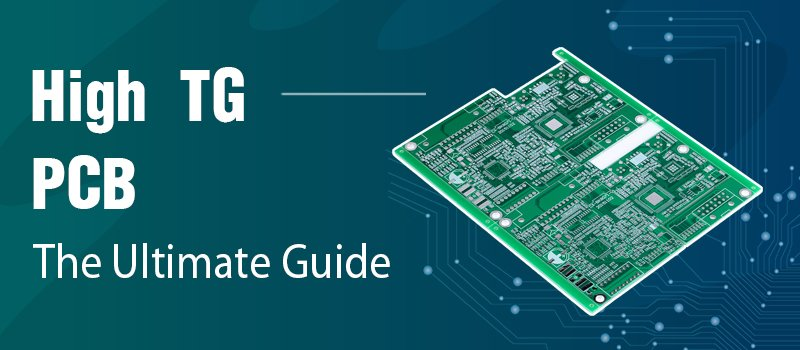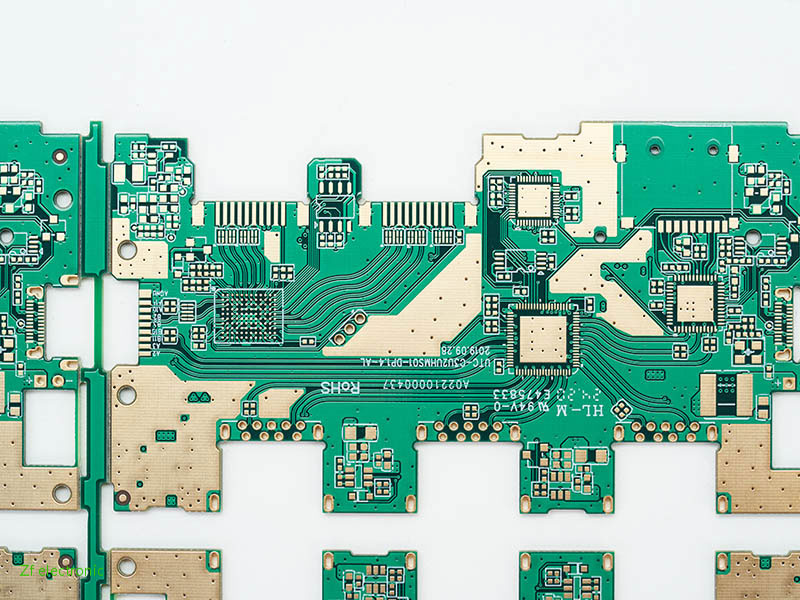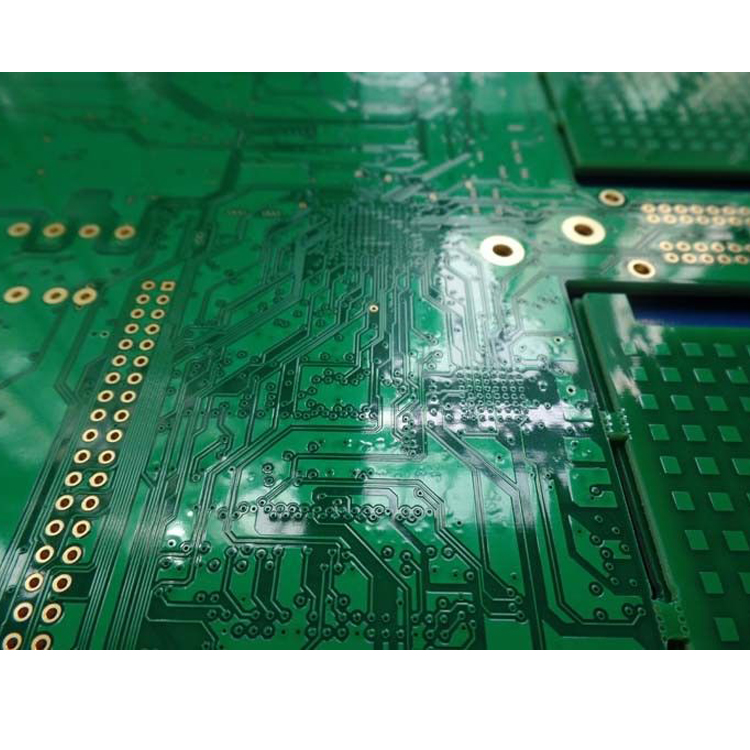Contact
Write to Us And We Would Be Happy to Advise You.
Do you have any questions, or would you like to speak directly with a representative?
By hqtweb
A Comprehensive Guide on High TG PCB
All these printed circuit boards have become excessively common among electronics and mechanical devices. Different types of PCBs are not available in the market each having its own benefits and disadvantages. In the course of this guide, we will be discussing the high TG printed circuit boards in detail.

The main purpose of these printed circuit boards is that they have the ability to withstand high temperatures. They're designed for devices that would be working in temperatures higher than 180 degrees Celsius.
The glass transition temperature is basically the temperature at which a substrate transitions from a glassy rigid state to a Soft rubber-like state.
You consider a printed circuit board to be a high TG board if its TG is higher than 180 degrees Celsius.
A standard FR-4 PCB has a high TG of around 130 degrees to 150 degrees Celsius.
Since their high-temperature printed circuit boards therefore they offer better chemical and mechanical resistance to both moistures as well as heat in comparison to the standard FR-4 printed circuit boards.
Before we get down to the details of the TG printed circuit board it is important to learn about the basics of FR-4 printed circuit board.
It basically is an epoxy material that is reinforced using flame-retardant fiberglass.
Printed circuit boards that come with FR4. TG ensures better heat resistance in comparison to the ordinary printed circuit boards.
They’re basically three different classifications often Fr for circuit boards. The classification is based on the number of copper trace layers present.
Below are the three different types of printed circuit boards:
It is the mechanical property that defines the transition temperature of each glass or polymer at which the material changes its form. Its state turns from a solid-state, glassy state to a rubberlike state.
Materials exceeding their TG do not melt in fact they undergo structural change and become rubbery.
The glass transition temperature is one of the wider components or qualities of epoxy.
The development of electronic technology choirs predicts circuit boards that come with higher TG.
Therefore we will not talk about that here. However, printed circuit boards that come with high TG office stability in higher temperatures because the substance is being used in these PCBs offer British stability at higher temperatures. The reason is that this substrate provides better mechanical and chemical stability as well as heat resistance for the board.
Although their so characteristics offer high TG printed circuit board material, we’re only going to talk about the most important ones.
Of course, this is perhaps the most common and prominent feature of a high TG PCP. The material has the ability to change states instead of getting burned or broken. Therefore, it provides higher heat resistance in comparison to regular, standard printed circuit boards.
we define a plated-through hole, as a whole in which the electrical connexion takes place between the external or the internal conductive patterns or both by plating off the metal on the holes of the wall.
This day works in a multilayer printed wiring board. In order to increase communication between the layers of circuitry, there has been an increase in the packaging density at all levels thus resulting in a significant increase in PWB wiring layers that then results in an increase PTH density.
All modern sophisticated high TG printed circuit boards ensure high PTH reliability. Therefore they are more common among electronics in comparison to the standard PCB materials.
The coefficient of thermal expansion basically specifies how much a PCB will contract or expand when it is Cool or heated.
Every material offers a different coefficient of thermal expansion that will stop for instance copper comes with a CTE value of 18 whereas epoxy Ryan comes with a CTE value between 30 TO 40.
If there is a mismatch of the CTE., It can create problems during the manufacturing of the printed circuit board. Mainly because both materials would be expanding at different amounts when heat is given to them.
Since the entire process of PCB assembly process and production cycle, a board has to go through numerous thermal cycles. The difference between the expansion rate can lead to delamination or joint failures.
With a high TG printed circuit board, you will not have to worry about this issue as it offers are lower Z-axis CTE.
The high TG printed circuit board materials offer high thermal shock resistance. So come on what exactly is a high thermal shock resistance?
It basically is a property of a material that makes it resistant to rapid and sudden temperature change.
These materials have the best city to which stand wide variation of temperatures. There highly effective for mechanical or electronic devices that are going to be operating in high temperatures.

A thermal stress test is an IPC standard test for printed circuit boards' thermal stability. In this test a sample of printed circuit boards is flux and then it is floated on the top of a mountain solder pot at 288 degrees Celsius for 10 seconds.
The printed circuit boards that withstand these thermal stresses are generally of premium quality. A high TG PCB offers exceptional thermal stress resistance.
This is perhaps one of the main reasons that they are common among devices that need to operate in extreme temperatures.
Yes, we agree that a high TG PCB has all these advantages yet it is imperative that you look after them with the right care. their maintenance is imperative for Increasing the effectiveness, efficiency, and life also printed circuit boards.
One thing that you need to keep in mind is that despite the ability to withstand heat it is important that you find ways to keep them cool. Adequate heat dispassion is the only way to ensure the safety of the printed circuit board and avoid it from getting damaged.
The great thing is that you do not need very technical information. On the contrary, having a basic understanding of how heat is transferred would help you increase the life span of your printed circuit board.
Most modern machines come with built-in ways that ensure heat dissipation effectively and effortlessly.
There are some of the common ways via which the heat is dissipated in a high TG PCB:
If you place your device in a well-aerated area and follow all the safety instructions, you can improve the life span of your printed circuit board by dissipating the heat properly. This also awards the whole working of the PCB.
Due to the durability and effectiveness of the high TG PCB, they are common in a broad range of devices. Although, you would see them in almost all mechanical and electrical devices, however, they are most common in devices that generate extreme temperatures, generate a lot of vibration, reactive chemicals, and shock once it starts working.
Some common applications include:
Any material that is used in the manufacturing of HIGH PCB is of premium quality. Below, are the most common TG PC Material:

These are among the most used Printed Circuit Boards because of the number of advantages that they offer.
Due to the TG Printed Circuit Board’s mechanical resistance to heat, moisture, and corrosive chemicals, it assists in stabilizing the condition within the device's internal changes. It ensures that the heat does not have any adverse impact on the internal components of the devices.
Since high power density designs are generating high temperatures, therefore, their structure should have the ability to withstand the heat and effectively dissipate it.
The HDI and multiplayer PCBs have compact, dense circuits that result in minimization of the air circulation, therefore, more heat is produced within the device. This would have a negative impact on the functionality of the device as well the integrity of its hardware.
Since High TG PCBs come with an excellent quality of dissipating heating quickly and effectively, therefore, they are a great choice for multilayer boards and HDI Printed Circuit Boards.
So, exactly when do you need the High TG PCB? This greatly depends upon the PCB TG Temperature as it would define the amount of heat that it can withstand. Since common PCBs can’t bear a load of more than 25 degrees Celsius, therefore, we recommend using high TG PCB in devices that require higher temperature
Another important thing that you would keep in mind is the technological migration to RoHS PCB. So, what exactly is a RoHS PCB? It is lead-free solders that require higher temperatures to flow. Only the High TG materials have the capability to handle them. Therefore, for migration, it would be imperative to use the High TG PCBs.
Since there is no denying the importance of PCB High TG, thus, we recommend buying them from the best manufacturer. We, —-----, excel in producing premium quality PCB High TG. For more information, visit us now!
Do you have any questions, or would you like to speak directly with a representative?